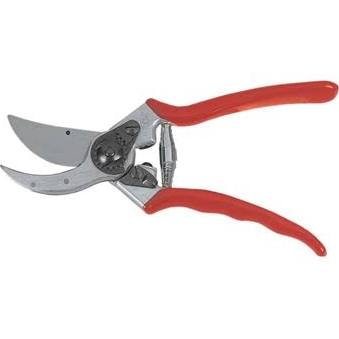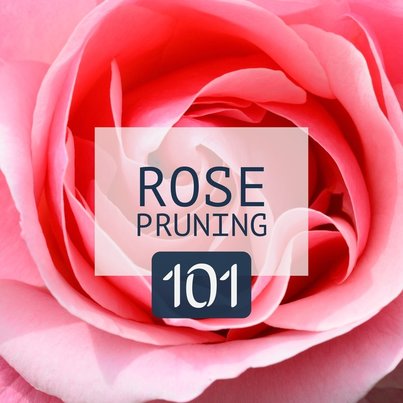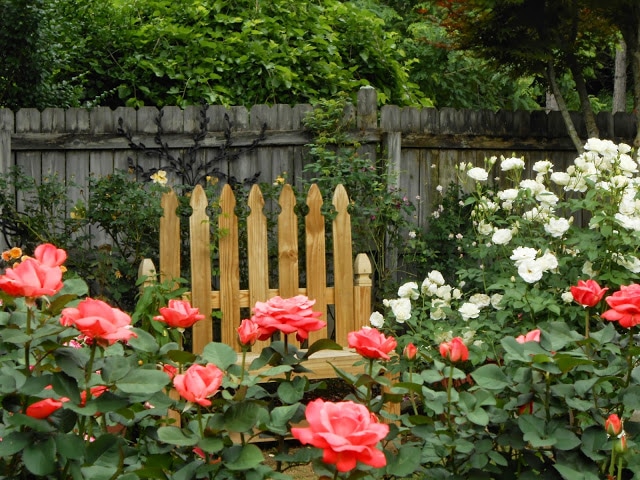Rose Pruning 101
By: Chris VanCleave, Helena Beautification Board Chairman

Growing up in Tennessee my grandmother always told me, "always prune your roses in the fall." No Exceptions. I've had others tell me it must be spring and if you google it, you'll find a ton of different times. Well, until I put a shovel in the ground and started growing for myself, did I find out what worked best where I live and grow. Here in Helena, it's definitely Spring time. Pruning is a signal to the grow to begin a new cycle of growth. It's a new beginning.
There are some basic elements of rose pruning and a few basic tools that I have used for years that have never failed me. Tools you'll need:
- Bypass pruners - These pruners make clean cuts
- Garden gloves - Gauntlet gloves that protect your forearms are preferred
- Loppers - For cutting large canes.
There are three main rules to remember when pruning roses. I call them the 3 D's of rose pruning. You want to remove anything
Repeat blooming roses bloom on new wood, I prune them low, down to about 18-24 inches from the ground. Our roses are already putting out new growth, so it was very easy to tell where to cut. If possible, you want to cut where the new growth is facing outward from the center of the bush. This new outward growth promotes good air circulation in the center of the rose. This is an important step in keeping down disease.
Do not prune climbing roses at this time. Continue to allow them put out new growth. Prune them until after the first cycle of bloom has finished. Then I trim and shape as needed. This also applies to any once blooming roses you have in your garden.
Weed and remove any debris that may have fallen or blown into our garden beds during the winter. Diseased leaves will overwinter in your garden and if you fail to remove them, it will cause you disease problems in the spring. We apply a fresh layer of mulch during this time. This new layer of protection will keep weeds down and help with moisture retention. We use mini pine bark nuggets. The mini nuggets break down quickly in the garden and adds organic matter to the soil.
By following these simple steps, you'll get your roses off to a good start for spring!
- Dead
- Damaged
- Diseased
Repeat blooming roses bloom on new wood, I prune them low, down to about 18-24 inches from the ground. Our roses are already putting out new growth, so it was very easy to tell where to cut. If possible, you want to cut where the new growth is facing outward from the center of the bush. This new outward growth promotes good air circulation in the center of the rose. This is an important step in keeping down disease.
Do not prune climbing roses at this time. Continue to allow them put out new growth. Prune them until after the first cycle of bloom has finished. Then I trim and shape as needed. This also applies to any once blooming roses you have in your garden.
Weed and remove any debris that may have fallen or blown into our garden beds during the winter. Diseased leaves will overwinter in your garden and if you fail to remove them, it will cause you disease problems in the spring. We apply a fresh layer of mulch during this time. This new layer of protection will keep weeds down and help with moisture retention. We use mini pine bark nuggets. The mini nuggets break down quickly in the garden and adds organic matter to the soil.
By following these simple steps, you'll get your roses off to a good start for spring!

Nicknamed "The Redneck Rosarian", Chris VanCleave is passionate about gardening and growing roses. He is an active member of the Birmingham chapter of the American Rose Society, serving two terms as President. In 2007, he created the Rose Chat Podcast which has reached over a half a million listeners with news and information on growing the world's most beloved flower, the rose. He was a contributor to the 2015 Southern Living Gardening Book, has appeared on P. Allen Smith's Garden Home television show and was featured in the June 2015 issue of Southern Living Magazine. Locally, Chris serves as Chairman of the Helena Beautification Board where he has spearheaded efforts to create a sustainable landscape in one of the Top 100 places to live in the US. His writing is seen on About.com, HGTV, Home Depot Gardening Club and on his popular website; RedneckRosarian.com, where he chronicles his gardening adventures and explores an intrinsic mix of life, faith and gardening. An agent of change with over 20 years' experience in process innovation, Mr. VanCleave is leading the charge to reinvigorate horticulture societies and helping them to reach their full potential in the social media age.



